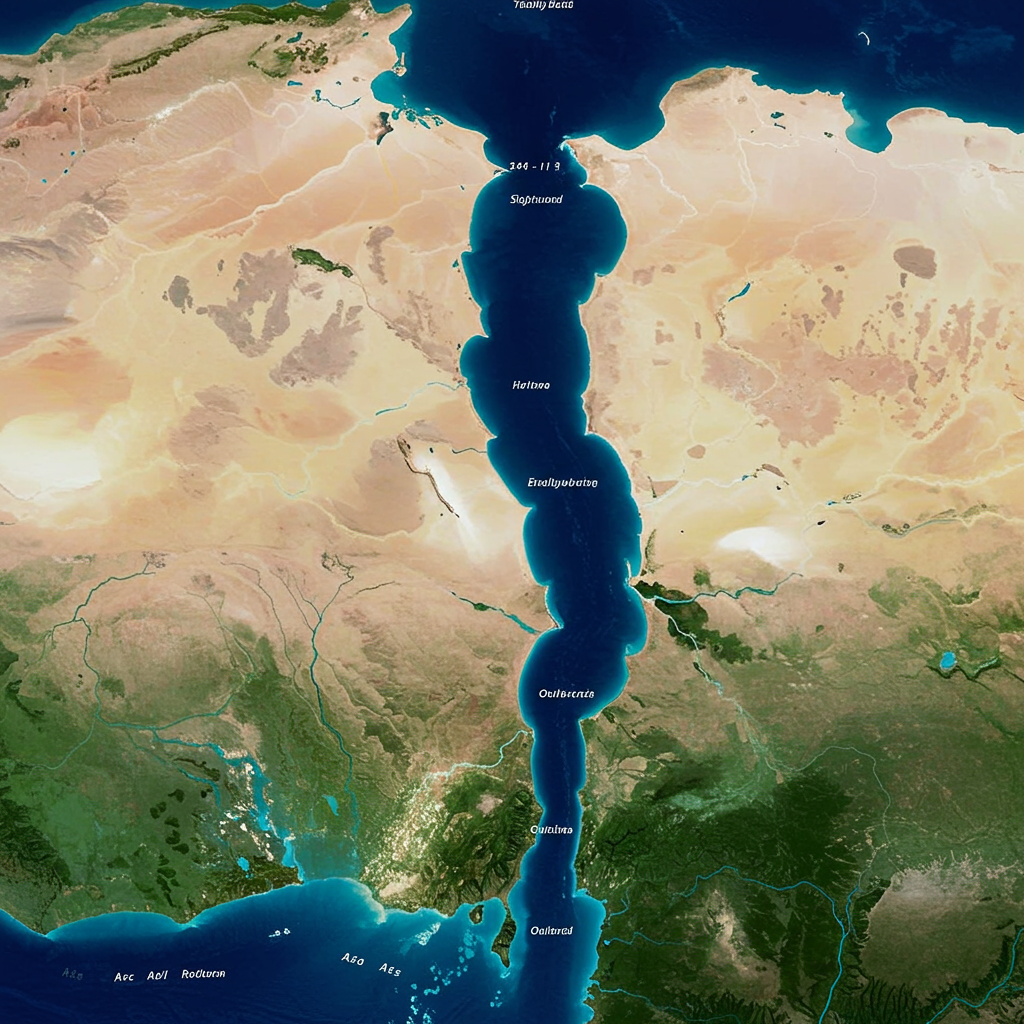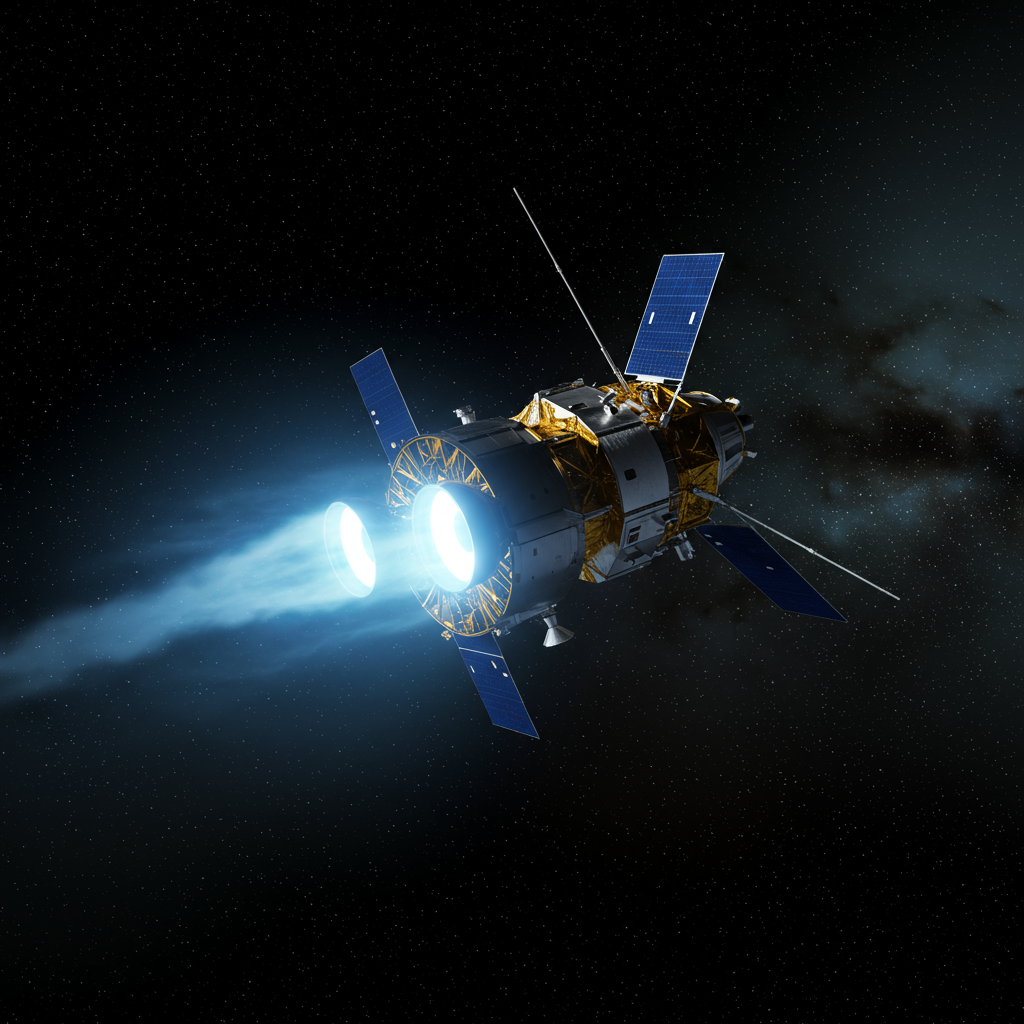Imagine a slow-motion geological drama unfolding beneath one of Earth’s largest continents. Scientists have recently uncovered compelling evidence suggesting that Africa is gradually splitting apart, driven by a mysterious, rhythmic “pulse” originating deep within the planet’s interior. This groundbreaking discovery offers vital insights into the powerful forces that shape our world and lays the foundation for a future where a new ocean could divide the continent millions of years from now.
The key to this colossal geological process lies beneath Ethiopia’s remote Afar region. This location is not just any piece of land; it’s a dynamic geological hotbed known as a “triple junction.” Here, three massive tectonic plates—the Arabian, Nubian, and Somalian plates—meet and are slowly diverging. This divergence is creating an immense rift system, essentially tearing the Earth’s crust apart. The triple junction is formed by the convergence of the Main Ethiopian Rift, the Red Sea Rift, and the Gulf of Aden Rift, making it a crucial point of study for understanding continental breakup.
Unmasking the Mantle’s “Heartbeat”
For years, geologists suspected that a hot upwelling of molten rock from the Earth’s mantle, known as a mantle plume, existed beneath the Afar region. This plume was thought to be a primary driver behind the rifting process. However, the detailed structure and behavior of this deep-seated phenomenon under the influence of active tectonic plates remained largely unknown.
A recent study, published in Nature Geoscience on June 25 (as reported by multiple sources), sheds significant light on this mystery. A research team, including scientists like Emma Watts, Tom Gernon, and David Keir, undertook a comprehensive investigation. Their findings confirm the presence of a mantle plume but reveal something far more dynamic than previously imagined: the mantle beneath Afar is not uniform or stationary; it pulses. These rhythmic surges of partially molten rock rise from profound depths, actively influencing the overlying crust.
Chemical Signatures Tell a Story
To understand this subsurface activity, the scientists adopted a multidisciplinary approach. They collected over 130 samples of volcanic rock from various locations across the Afar region and the adjacent Main Ethiopian Rift. Volcanic rocks serve as geological messengers, carrying chemical signatures from the depths where the molten rock originated. By meticulously analyzing the composition of these samples, the researchers were able to infer details about the mantle’s structure and behavior.
Combined with existing data and advanced statistical modeling, the analysis painted a clear picture. They found a single, asymmetrical plume beneath Afar. Crucially, the chemical composition of this plume displayed distinct, repetitive banding across the rift system. Study co-author Tom Gernon likened this pattern to “geological barcodes” or chemical striping. This unique chemical signature strongly supports the theory that the plume is pulsing rhythmically, much like a heartbeat.
How the Plates Influence the Pulse
One of the most significant findings of the study is the intricate interaction between the deep mantle plume and the overlying tectonic plates. The researchers discovered that the way these mantle pulses behave is heavily influenced by the characteristics of the tectonic plate above them. Factors such as the plate’s thickness and the speed at which it is pulling apart play a crucial role in channeling the ascending pulses.
For example, in faster-spreading rifts, such as the Red Sea rift, the mantle flow and its associated pulses appear to travel more efficiently and regularly. Professor Gernon compared this to a pulse moving smoothly through a narrow artery. In areas where the lithosphere (Earth’s rigid outer shell, including the crust and uppermost mantle) is thicker, the flow is more impeded, leading to different spacing in the chemical striping. This variation in spacing across the different rifts within the Afar junction directly reflects the powerful influence of the overlying plates on the deep mantle dynamics.
Profound Implications for Earth Science
This revelation about the pulsing mantle plume and its interaction with tectonic plates has profound implications for how we understand our planet’s dynamic systems. It highlights a complex and previously underestimated link between the deep interior and surface geological processes.
Study co-author David Keir noted that the evolution of deep mantle upwellings is intimately tied to the motion of the tectonic plates above them. This connection is vital for interpreting various surface phenomena, including the patterns of volcanism and the occurrence of earthquake activity in rift zones. The research specifically demonstrates that deep mantle upwellings can flow laterally beneath the base of tectonic plates. This lateral flow helps to focus volcanic activity towards areas where the tectonic plate is thinnest, further accelerating the rifting process.
The Long Road to a New Ocean
While the concept of Africa splitting and birthing a new ocean might sound dramatic, it’s essential to remember that geological processes unfold over vast timescales. The rifting in East Africa has been ongoing for millions of years, and the complete separation of the continent and subsequent flooding of the rift valley will take millions more.
This study doesn’t predict an imminent split but rather provides crucial insights into the underlying mechanisms driving this long-term process. The pulsing mantle plume is an active player in this slow-motion breakup, constantly exerting force and channeling molten rock in ways previously not fully understood. It’s a testament to the continuous reshaping of Earth’s surface driven by forces deep within its core.
Looking Ahead: Unraveling Mantle Secrets
The multidisciplinary approach employed in this research, combining geochemistry, geophysics, and mathematical modeling, proved highly effective. Emma Watts, the lead author, expressed hope that this study will encourage similar integrated approaches in future research, not just in Afar but globally. Understanding Earth’s systems is like assembling a complex puzzle, requiring pieces from various scientific disciplines to see the full picture.
Future work stemming from this study aims to delve deeper into the specifics of the mantle flow. Scientists are eager to investigate the rate at which this mantle material is moving beneath the various tectonic plates. Continued monitoring and research in the Afar region will provide invaluable data for refining our models of continental breakup and the intricate dance between Earth’s deep interior and its ever-changing surface.
Frequently Asked Questions
What is the “heartbeat” under Africa and how does it cause splitting?
The “heartbeat” refers to a rhythmic, pulsing upwelling of hot, partially molten rock called a mantle plume, located deep beneath Ethiopia’s Afar region. Scientists found this plume surges upwards in distinct pulses with unique chemical signatures. This pulsing activity exerts pressure on the overlying tectonic plates, contributing to the stretching and thinning of Earth’s crust in the East African Rift System, which is the fundamental process causing Africa to split apart.
Where exactly is this splitting happening in Africa?
The most active area of continental splitting in Africa is centered in the Afar region of Ethiopia. This unique geological location is a “triple junction” where three major tectonic plates (Arabian, Nubian, and Somalian) are pulling away from each other. This divergence creates three prominent rift valleys: the Main Ethiopian Rift, the Red Sea Rift, and the Gulf of Aden Rift, all converging in Afar.
When is a new ocean expected to form from this splitting?
While the process of Africa splitting and the formation of a new ocean has begun, it is an incredibly slow geological phenomenon that unfolds over millions of years. The current activity, including the discovery of the pulsing mantle plume, indicates that the process is actively underway. However, a complete separation of the landmasses and the flooding of the rift valley by ocean water to form a new ocean basin will not happen for many millions of years into the future.
Conclusion
The discovery of a pulsing mantle plume beneath the Afar region offers unprecedented insight into the forces driving continental breakup. By analyzing volcanic rock chemistry and employing sophisticated modeling, scientists have revealed that the mantle’s “heartbeat” is actively interacting with overlying tectonic plates, guiding the slow separation of the African continent. This fundamental research not only enhances our understanding of geological processes like volcanism and earthquakes but also provides a glimpse into Earth’s deep future, where the relentless pulse from below could eventually give birth to a new ocean, redrawing the global map over unimaginable timescales. It underscores the dynamic nature of our planet and the power hidden beneath our feet.
Word Count Check: 1044 words




